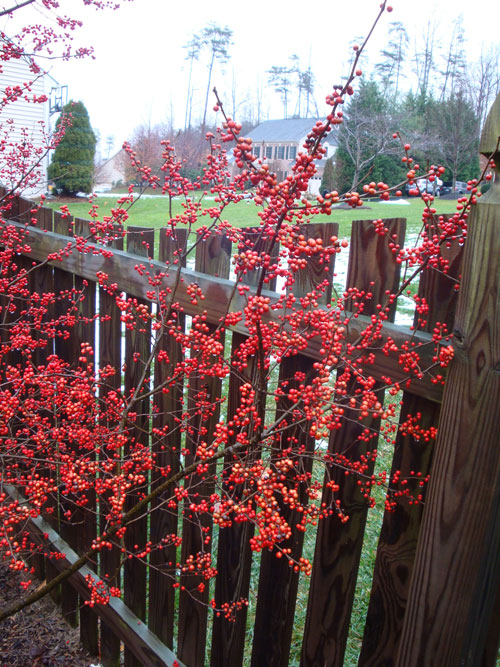This week I got an email from someone interested in hiring me to do a planting plan. One of the things she said that stood out to me was “some of the other designers are trying to convince us to go away from native plants..but we don’t want to.” Hmmm. I’m already intrigued, but I feel like any conversation about native plants has me looking like this:
Let’s establish something important, shall we? I’m a huge treehugger. Edward Abbey is on my list of authors I wish I could’ve met, we recycle, we compost, we have a strong preference for fuel efficient little cars, I was using LEDs before they went mainstream, etc. Ok? So don’t accuse me of eating baby harp seals for my more nuanced position on natives.
I often talk about two things you need to consider in landscape design, science and aesthetics. That glosses over a third, very important, consideration: emotion. Native plants hammer on the emotional buttons, especially for us treehuggers. After all, natives are indigenous to where we are so a) they must do really well here and b) putting more native plants back in the ecosystem must be the right thing to do, right? Well…. yes, BUT. Here’s what you need to consider:

Survival
I’m in Virginia. Therefore any plant that’s native to Virginia should be all but guaranteed to do well, right? Not really, for one important reason. Many native plants are going to do best in a certain type of environment (forest floor, marsh, meadow) that we just can’t replicate in your suburban backyard. While it’s common sense that a shade-loving fern will do poorly in full sun, you also need to consider other factors. Some plants will do best in the rich, fertile soil of the forest floor. If we stick them in the nasty clay the builder left for us, they’re not going to do abundantly well.
Aesthetics and Availability
When it comes to utilizing native plants I’ve found there’s a bit of a gap between peoples’ expectations of how it’s going to look, and the reality. When I first moved to Virginia ten years ago it was exceedingly difficult to find native plants. My first trip to MANTS (the Mid-Atlantic Nursery Trade Show, our big industry event every winter) I was excited to find ONE vendor doing them. Last year at MANTS I think there were half a dozen or so. But you have to remember that these plants aren’t being grown for the retail garden center market. The biggest demand for natives isn’t for residential, it’s for restoration and remediation projects. The agencies funding these projects aren’t looking for a handful of gorgeous, full, showy specimens. They’re looking for the best price on thousands of beech saplings. As a result, if we’re going full-on native we’re often planting stuff that will look great down the road, but when we leave the site today it looks a bit… scraggly.
There’s also the issue of what the plant beds will look like if we use all natives. Natives often lend themselves to the looser, more natural look that *I* personally prefer, but if you like a more manicured landscape you may be out of luck. You also don’t have as many extravagant blooms or sexy evergreens available to you. And that’s fine, we can work with that, but you need to adjust your expectations. Your landscape won’t look like the builder’s model home (not that that’s a bad thing). If you want a great resource for native plant lists in Virginia, here you go.
I guess this is a long and winding way of getting to my point, that when asked if I can design a landscape with natives my answer is “it depends”. There are gobs and gobs of natives we can use that will be successful, plants like sweetbay magnolias and winterberry hollies and dogwoods, and I tend to lean on these in my designs anyhow. But there are some design goals that can be better achieved using introduced species, and I find that a mix of natives and non-natives can create the most beautiful, most successful planting. At the end of the day my job is done if you love your landscape every time you look at it. You want to do natives? Me too, but let’s keep some options open that will help me get you where you want to be.


As a landscape designer, I end up telling clients this very same thing. I’m adding this article to a list of resources for what I call, “teachable moments”.
Thank you!